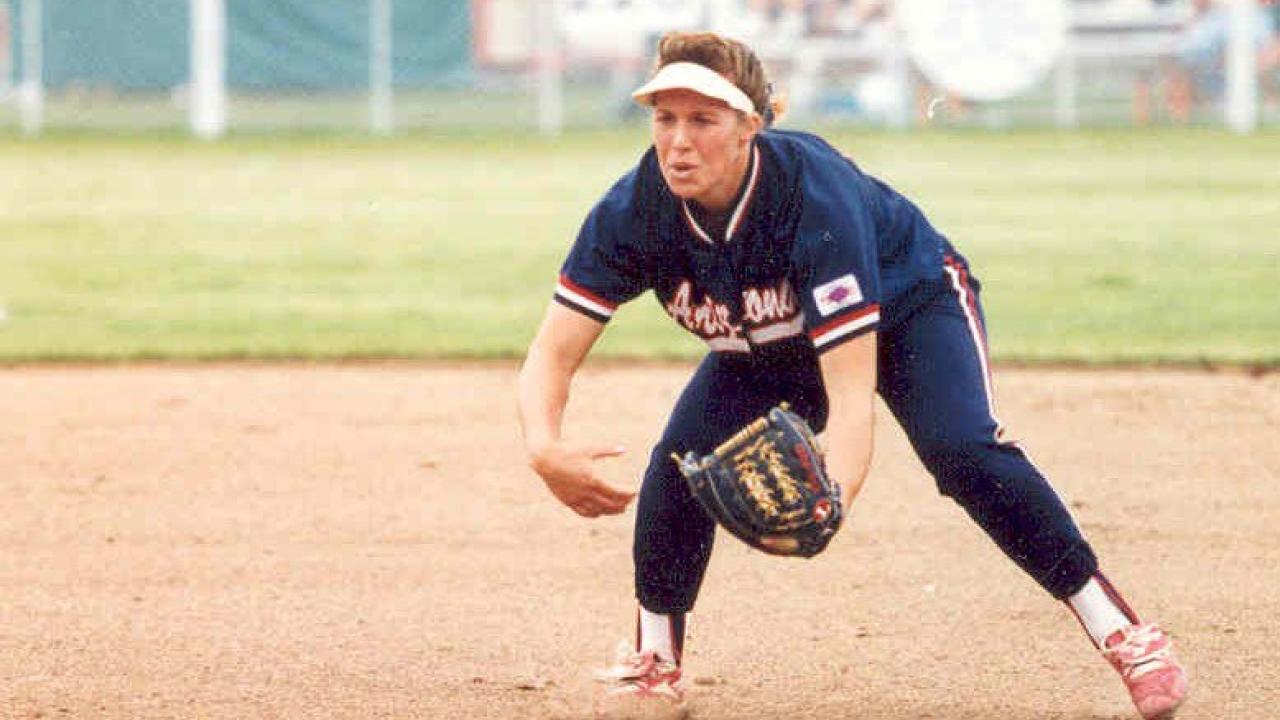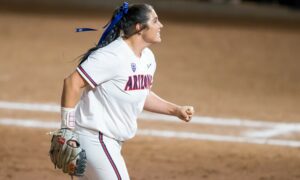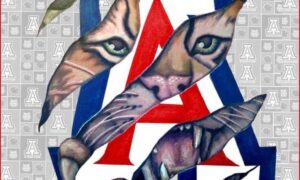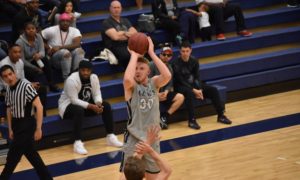(Tucson, AZ) Arizona Softball has an extensive history, steeped in tradition and former Wildcat Hall of Famer Jenny Dalton-Hill epitomizes the ethos of an Arizona Wildcat for Life.
In additon to her many accomplishments as a player, Jenny Dalton-Hill is a Softball Analyst for ESPN, the Little League World Series and a regular member on ESPNs 7innings Podcast.
I had the privilege and honor to sit down and chat with the 1996 National Player of the Year, three time Women’s College World Series Champion, second baseman, who played under former head coach Mike Candrea with Arizona Softball from 1993-1996.
Let’s get into our Q & A.
KB: What are your thoughts on Arizona’s new hires, Josh Bloomer and Christian Conrad?
JDH: “I’ve known Josh Bloomer for 10-15 years. He was a high school and travel ball coach in Kentucky where I live.
I know that he thinks the game at a very deep level. He was also Allie Skaggs travel ball coach and so that relationship is already in place which is so important because Allie’s one of the leaders on that team at Arizona. So, with coach Bloomer coming in I feel really good about the approach that these hitters are going to have at the plate.
But, they had a great year offensively, they hit the ball well. So, when it comes to the trajectory of the offense I see it just continuing to trend upwward knowing the kind of coach that coach Bloomer is and also the meticulous prepartation that he puts in to everything that he does so he is a great additon to the Wildcats for sure”. “I don’t know Christian.
I know that he’s been in a very successful program under Tairia Flowers. I’ve watched them perform but I don’t know him personally so I cannont give too much background on him”.
KB: There were multiple osbstruction calls in post season through the final game in Oklahoma City. Do you think the NCAA/Coaches should address this issue and is there confusion with the rule?
JDH: “Yes, there is 100% confusion in the rule. I think the issues that we have are in the wording and the execution of the wording.
Are we having a problem with obstruction, yes, we are having a problem with obstruction. It is a rule change year and so I expect that rule to be looked at and to be able to have it changed. I don’t know that obstruciton is going away. I don’t think coaches will just elimiate obstruction.
It’s definitely there to protect the players but the wording needs to be changed to not only give clarity but also to allow players to play the game without feeling handcuffed all the time.
Right now the wording is too vague and yet too specific at the same time.
As long as we can get our english majors in the room to help us navigate how to word this rule correctly.
This will give coaches an opportunity to coach the game and help the player understand where the position needs to be on plays made at bases. It will help the plate but also help umpires understand how to be more consistent in their calls, that’s where the problem comes in.
It’s not so much that the rule is bad, it’s not worded in a way that both parties can agree on how it is called in the moment. That part is really hard.”
KB: Are you seeing more out of the box calls in the post season?
JDH: “When you think about how out of the box is called, typically in the regular season there is a three person umpire crew, meaning an umpire at first, third and at home.
The umpire at home has the responsibility to make the out of the box call, but the umpire at home also has the responsiblity of balls and strikes and balls down the line in terms of fair or foul.
When a slapper is up they are not keyed in on the feet of a slapper so if a ball is down and in, that gives an umpire an opportunity for their eyes to be down and seeing the footwork of the player.
However, if the pitch is down and away, up and in, up and out, the umpires eyes are not really with definitive ability to be 100% sure.
It’s hard for a home plate umpire to make that call. When you get to the post season, notice, the umpiring crew consists of four.
Then the umpire at second base can then give help to a home plate umpire on an out of the box call.
Not only do they get help then they can kind of relax and just let the play happen and maybe their eye can pick that up more often but they have help from the umpire at second base with that help the rule is called more often.”

Photo – ESPN.com
KB: Do you think Softball should implement measures to speed up the game?
JDH: “100%. Our game has gotten to a molasses like speed. We used to pride oursleves on games lasting less than 2 hours. It used to be 1 hour 45 minutes, we would play double-headers in less than four hours at times and now we are seeing games going 3 to 3 1/2 hours. That’s more baseball like.
The fan loves the fast pace of our game but we have gotten to a place where not only is a fan getting frustrated but we are also not fitting in our TV windows anymore.
If we don’t fit in our TV windows we won’t get as much airtime. It’s definitely something that needs to be addressed.
There are a couple of items on the table to look at that, whether it’s a pitch clock or a batter leaving one foot in the box so they don’t go down the line and back. We do not have anything,
I don’t think, going through the rule changes on the table that will help us like baseball does the ear piece in the catchers helmet, we do not have anything allowed like that in our game.
There are no communication devices allowed in our game. If we are looking to make those kinds of changes that is a totally seperate rule that needs to get looked at to be able to allow that technolgy on the field for a coach and a catcher.
The arm bands are still going to be there. But, we need a pitch clock and we definitely need something that keeps the batter close to the batters box.
In International play, a foot has to stay in the batters box.
If our goal is to win a Gold Medal, why are we not implementing rules that reflect the International competition so that our players are ready to go right into that without making a ton of change to get back to the Olympics.”
KB: Can you talk about the NIL (Name, Image, Likeness) meetings that are taking place in Washington, DC?
JDH: “The athletic directors and coaches met with their state legislation who are in DC right now.
The reason that is, is because the only way to get NIL under control is to make sure that there is a federal law not state legislation handling it.
Right now NIL is individual and up to each state. We are seeing a ton of disparity how each state is handling it which then gives added benefit or takes away from the ability of coaches to be able to bring players in.
I do want to make sure you understand though there is a difference between NIL and Pay to Play. We are seeing a lot of Pay to Play happening, that’s when coaches are saying we can give you a dollar figure if you come in and play. That’s not NIL.
That’s paying a player to come to your school and play. I actually really like NIL. Because when I was in college I wanted to give lessons or run camps and clinics, we we’re not allowed to and that doesn’t include getting paid for an autograph or a picture appearance, selling apparel, etc.
In the 90s Arizona was the Oklahoma of today. The Arizona players in the 90s were rock stars and would have been able to make money and beneift.
The place where our interscholastic sports is really suffering is in the Pay to Play arena becuase it’s the wild wild west.
Every state has different rules, every state is using it to their advantage and some states are really handcuffed by the legislation in their own jurisdiction that doesn’t allow certain things that other states are able to do.”
KB: When you played at Arizona, what was your favorite uniform or uniform combination?
JDH: “Under coach Candrea, he was a very superstitious man. We were so excited one year, we got a light gray uniform and we never had that before. We were so excited, coach let us wear it and we lost.
In my four years that was the only time we wore that uniform because we lost in it, so coach never pulled out those gray uniforms again.
I remember watching Arizona play this year and they had a charcoal gray and I was so jealous because we never got to play in our gray’s ever again.
My favorite uniform combination, my freshman year we won a National Championship in red top, white bottoms. I think it was 1994, we won in all blues and then in 1996 we won in all whites. So, I don’t know there’s a favorite combination.
Everybody thought oh my gosh, how did you guys survive in those polyester uniforms in Arizona, that’s all we knew. So, you just put on your pants and you played.
I actually love the fact that Arizona played in pants. UCLA played in shorts back then. The International rule was at the time, shorts. UCLA took on that persona and played in an International kind of uniform.
I loved being in pants, to be able to be so aggressive, yeah, you sweat but it dries pretty quick because it’s so dry out there.
I don’t know that I had a favorite combination, I just know that I wish we could have worn those gray’s a couple more times.”
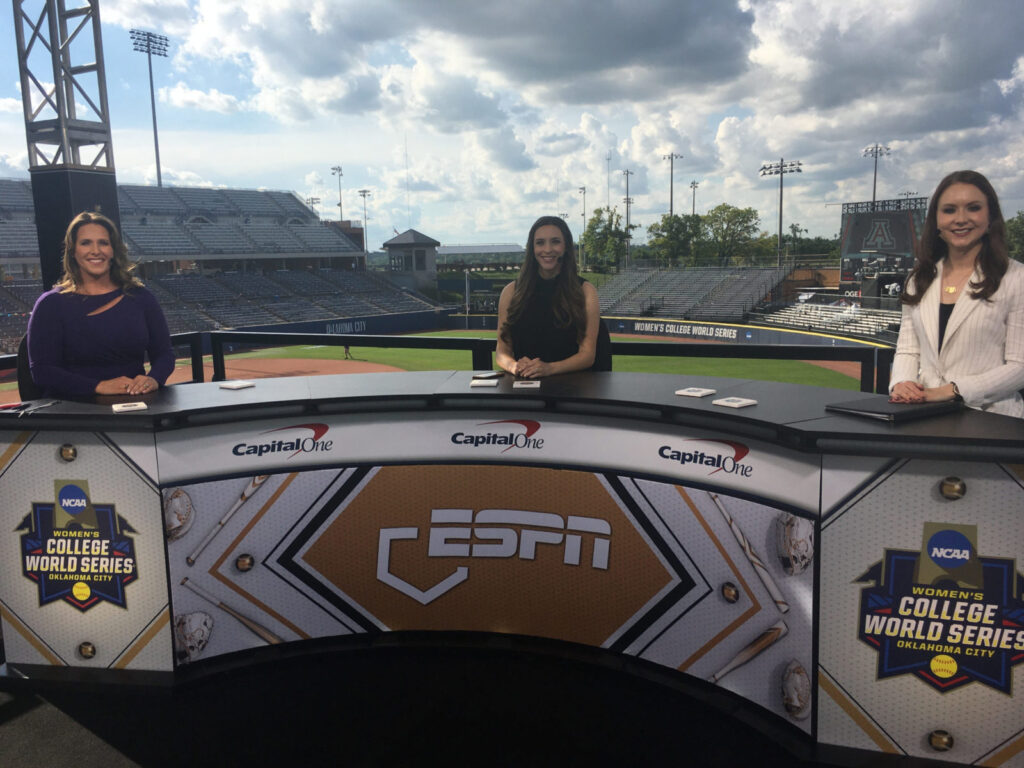
Photo – ESPN.com
KB: Can you talk about Coach Candrea’s practices?
JDH: “I remember practice being hard, it was usually one more repetition that lasted 25 times, because your one more maybe wasn’t good enough.
The way that we practiced was faster paced then what we would play in to help the game slow down when we were trying to execute for perfection. More than anything, we didn’t stop until we got it right.
There was no number that he was looking for and sometimes practices went quickly if we hit our cuts, and we were in our spots and our throws were right.
Sometimes practices went long if you were learning a new position. The practices my freshman year took a really long time.
It was hard to be a freshman but the seniors held me accountable. Coach Candrea is not a yeller. He is not a coach that is going to stop practice, come out and yell at you. He is just going to hit you another one and the best teacher is failure.
You don’t want to fail and so by failing you learn how to get better. He is not hitting ground balls right at you. He is hitting them in the hole, he’s hitting them with a chop. His execution of a FUNGO is beyond anything I have ever seen anyone else do.
My freshman year I blew out my ankle going into the WCWS. So, in that Fall, I had to have reconstructive surgery so I was in a cast for all of the Fall, he didn’t care.
I was at practice. I took ground balls on my knees and he hit me ground balls on my knees with so much perfection.
I loved taking ground balls from him because I knew he was threading the needle trying to find a weakness that I couldn’t execute. My goal was to always beat it out and find a way to be better than what he was. He was trying to pressure me into failure and I was trying my best to never fail.
Because of that we would get into games and everything felt easier. It felt slower, it felt like you can execute because he had already pushed you to a point that was much faster than you were ever going to be asked to do in a game.
When it comes to coach Candrea’s practices, I don’t remember him ever raising his voice. We were coach fed and player led.If we weren’t getting it right, another teammate would come up and talk to you about it and fix the problem. Sometimes, if it was a footwork issue or a body positon issue, he would come out and demonstrate or put you in the position to make sure that you were doing it at a higher level.
He was never one to yell or scream or belittle. He truly was a coach that believed in you more than you believed in yourself and he was trying to get you to a place where you can reach that level of belief.”
Bear Down Arizona – Go Cats!
Article by Kevin Barney – 520 Sports Talk


